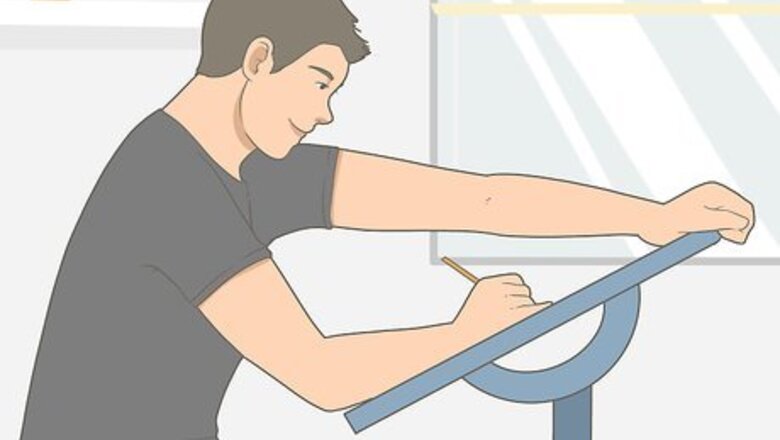
views
Getting Qualified for an Apprenticeship
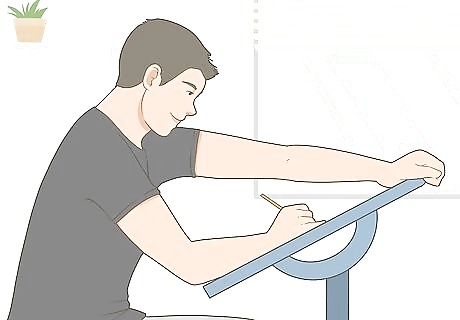
Develop your skills by drawing regularly and pushing yourself. To become a tattoo artist, you need to develop the ability to draw in a variety of styles. Get in the habit of drawing for at least 1 hour every day. Work from a variety of source materials to practice sketching realistic, surreal, and minimalistic images. Find highly-detailed images from the internet or art books and recreate them to work on duplicating sketches with a lot of texture and complicated line work. Work frequently on realistic portraits. Many tattoos are images of people, and the ability to draw a photo-realistic face and body is a prerequisite for tattoo artists. As a tattoo artist, you take preliminary sketches and reproduce them on a person’s body. Therefore, your ability to take images and reproduce them is essential to earning an apprenticeship.
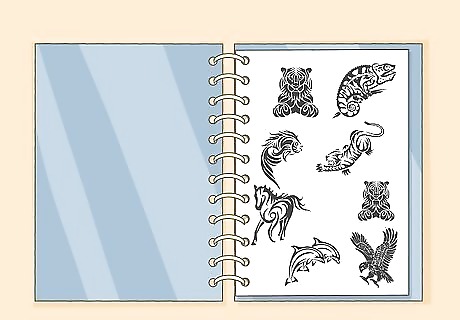
Put a portfolio together that embodies your flexibility to market yourself. To start, put together 10-15 drawings that prove you’ve mastered the most common tattoos. Flowers, dream-catchers, skulls, and crosses are some of the most prevalent tattoos. Include another 10-15 original pieces that highlight your original style. A portfolio with a variety of different pieces demonstrates your ability to work in a bunch of different styles, which will make you more appealing as a potential apprentice.Tip: Format your portfolio like a sequence of flash sheets—individual pieces of paper that contain 4-8 individual pieces on each sheet. This the traditional format for a tattoo portfolio. You can find examples of flash sheets inside of every tattoo shop on the walls in the lobby. You can include a few black and white pieces if you’d like, but rely mainly on colored pieces. Your ability to work with colored ink, pencils, and markers illustrates your ability to work with color and fading.

Get a college degree in a visual art if you want to stand out. While there aren’t any hard requirements for becoming a professional tattoo artist, having a collegiate degree in a visual art proves that you’re familiar with different schools of art, methods of composition, and styles of illustration. This will make you stand out when it comes to getting an apprenticeship. After high school, apply to an art school or college and major in fine arts, painting, illustration, or some other art-related major. Some art schools offer classes on tattooing. Look at a school’s list of available classes to see if they have any tattoo-specific courses. You do not have to go to college or art school to become a tattoo artist. If you don’t want to go back to school for an extended period of time, take local art classes or audit a few college classes to continue improving your art.
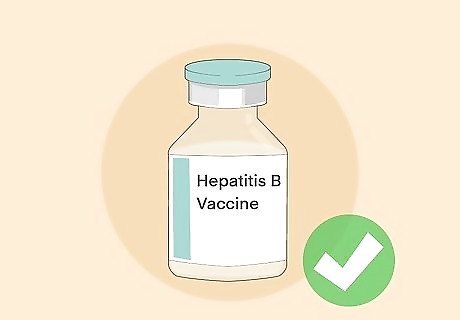
Get a hepatitis B vaccine to stay safe in the shop. In many states and countries, a hepatitis B vaccine is legally required if you want to work in a tattoo parlor. Contact your doctor to schedule a hepatitis B vaccine. Even if it isn’t legally required where you live, shops will look favorably on you for taking safety seriously. Hepatitis B can be transmitted through blood, and tattoos tend to bleed as the needle makes contact with the skin. Once you receive the record of your vaccine, tuck it at the back of your portfolio. This way, you can show it to potential mentors if they ask about it.
Finding a Mentor

Look online to find reputable artists that you want to work with. To find an artist you want to work with, look online to find the artists working in your area. Read reviews of the shop and look at each artist’s work up to see if it fits your personal style. If an artist’s work appeals to you and their shop is reputable, consider going in to meet the artist.Tip: Be prepared to spend quite some time looking for a mentor. Many tattoo artists don’t accept apprentices, and many popular artists will already have apprentices. It may take 6-12 months to find an artist willing to take you on board.
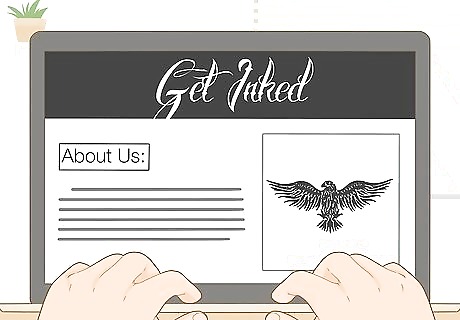
Search a tattoo parlor’s website to see if they accept apprentices. Before you go into a shop to inquire about an apprenticeship, look at the parlor’s website. Search thoroughly to see if their website mentions any openings for apprenticeships. Many shops will also mention if they aren’t open to apprenticeships. If there are openings, look to see if there is anything specific that a shop requires applicants to do before coming in for a visit. A shop may not accept apprenticeships because they already have apprentices. Some shops don’t accept apprentices as a matter of policy.

Show up at the shop with your portfolio and introduce yourself. Put on a clean pair of clothes, brush your hair, and head over to the shop with your portfolio. Introduce yourself to the person behind the desk and explain that you’re looking for an apprenticeship. Mention that you’ve brought a portfolio and offer to share it with someone. They may introduce you to a manager or owner, or they may simply say that you should come back at a certain time to talk to the artists. Be cordial and follow their directions. There are no formal applications when it comes to getting an apprenticeship. This process is unique at every shop. Don’t overdress by wearing a suit or fancy skirt. Jeans and a nice shirt or a trendy dress will work just fine. Tattoo parlors tend to be pretty laid back and you want to seem like someone the employees would want to hang out with. You can bring a resume with you if the shop mentions it on their website, but many tattoo parlors won’t ask to see one. They tend to care more about your portfolio than your work experience.
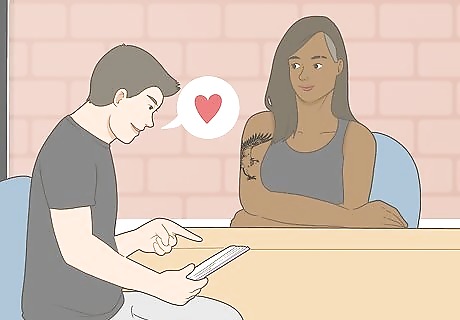
Talk to each potential mentor and examine their portfolio. If you are introduced to the artist that you were hoping to work with, ask to see their portfolio. Compliment their work and ask questions about their process and inspiration to show that you’re interested and enthusiastic. Be friendly and answer their questions as honestly as you can to stand out as a potential apprentice. Be prepared to answer questions like, “Why do you want to work here?” and “What drives you as an artist?” There are no formal interviews for most apprentice positions, but the casual conversations that you have with an artist will inform their decision to take you on or not. Many artists treat apprenticeship conversations like friendly chats. They’ll want to get to know you before they offer you a position, so go with the flow of the conversation to avoid turning the artist off to working with you. It is extremely unlikely that you’ll be offered a position on the spot. Many artists will ask you to come back for more chats, or ask you to come hang out around the shop for a while before they make a decision.
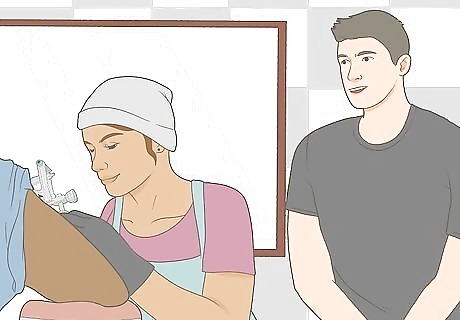
Hang around the shop so the artists can get to know you. Even if the artist you want to work with says “no,” show up at the shop regularly to hang out, chat with the clerks, and relax. The longer that you’re around the shop, the more comfortable the artist will become with you being around. This will also give them the opportunity to get to know you better. It’s common for aspiring apprentices to hang around the shop that they want to work at. It can take weeks for a shop to warm up to the idea of hanging out with you. Don’t be annoying about it. If you are asked to go home or stop showing up, cut your losses and give it another shot at a different shop.

Be persistent in asking for an apprenticeship and don’t give up. It can take a long time to find an apprenticeship. There are a lot of brilliant artists out there trying to make it into a parlor as an apprentice. Keep working on your art and show your face frequently to give yourself the best shot at landing an apprenticeship position. When you see the artist that you want to work with, casually ask about the position. Say something like, “So, any chance you’re going to take me on today?” or, “Are you still thinking about that apprentice position? I think I’d be perfect.” Casual inquiries are likely to be more effective than formal requests.

Accept any offers to work as an apprentice at a shop you respect. When you are invited to start working as an apprentice at a shop that you respect, accept the position. Even if it isn’t with the artist you originally wanted to work with, you’ll still learn a lot from simply being at the shop. Ask when you need to start showing up and sign any apprenticeship agreements that the shop asks you to sign. You may not land a position working with an artist that you originally wanted to work with, but even being in the same shop will give you a ton of time to talk and learn from them. Apprenticeships are often informal positions and there may not be any employment paperwork for you to sign. You are unlikely to be paid as an apprentice. Most apprentices work a paid job for 3-4 days and then work at the shop for 3-4 days.
Working as an Apprentice
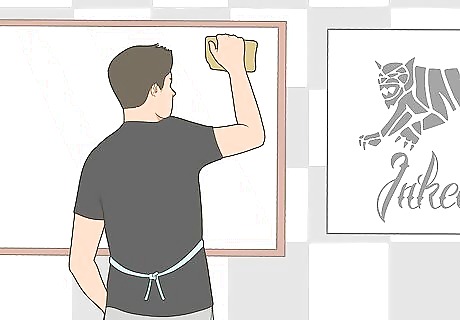
Complete basic tasks around the shop as you’re directed. At the beginning, you aren’t going to be asked to do any creative work or tattooing. For the first 1-3 months, complete tasks as they’re assigned by your mentor or the other artists at the shop. For instance, you may be asked to fetch coffee, file paperwork, or clean the shop up. Continue working in this capacity until you’re asked to move on to more interesting work. Tip: While apprentices usually learn from a single mentor, you’re basically working for the entire shop. Other artists and employees may ask you perform tasks for them. If they do, follow their directions. An apprenticeship typically takes 1-2 years to complete, but it may be a little longer or shorter depending on your skill and proficiency with a tattoo gun.
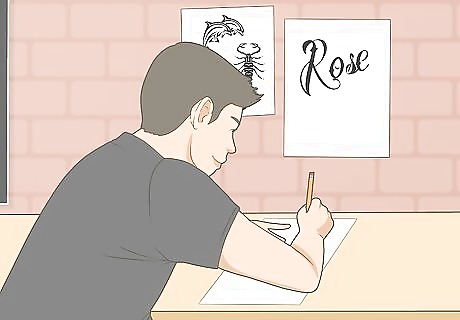
Create preliminary sketches that match the needs of the mentor’s clients. As you move your way into a more professional role, you’ll be asked to complete preliminary sketches for clients and artists. Work in the shop to create drawings based on the needs of the client or your mentor. Follow instructions when it comes to adding visual elements, changing your designs, and implementing colors. Your ability to follow directions demonstrates your skills as an artist and employee. Don’t fight back if you’re asked to change your art in a way you don’t like. When shops offer free sketches to potential clients, the work is typically completed by an apprentice. Your work may be incorporated or adjusted by the artist that asked for your design. Don’t get upset if you find your work being picked apart and reused!
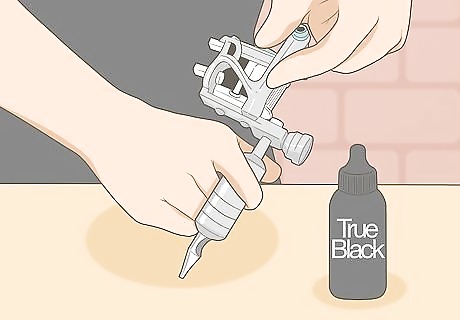
Learn how to set up the equipment and mix ink. As you get closer to actually tattooing, your mentor will teach you how to put a tattoo gun together, clean skin, keep a workspace sterile, and mix inks in your gun. Listen carefully, take notes, and ask lots of questions to learn everything that you can about safely operating a tattoo gun and running a safe shop. This information is extremely important when it comes to earing your tattoo artist’s license. You will be able to learn using the shop’s equipment, but you’ll need to buy your own tattoo gun at some point. A tattoo gun kit will cost $300-1,000. Every shop and mentor teaches these skills differently, and this learning process will likely take months.

Provide free tattoos to friends and family to get some practice. Once you’re familiar with the equipment, safety procedures, and sketching process, start your tattooing career by working on friends and acquaintances for free. Ask around on social media to see if anyone wants a free tattoo. During these sessions, your mentor will monitor your work and provide live feedback and advice to help you learn how to tattoo more efficiently. Start with simple designs to keep things easier early on. This will keep you from getting discouraged or making a serious mistake. Make it abundantly clear to your initial clients that you are new. Make sure that the client is comfortable and never pressure someone into letting you tattoo them. Apprentices typically provide 100-200 free tattoos before they can start charging clients. Even then, you will offer heavily discounted rates due to your inexperience.
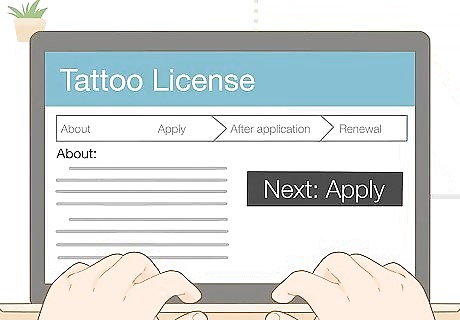
Get certified as a tattoo artist by applying for your license. Once your mentor tells you that you’re ready to become a full-time tattoo artist, apply for your license. The tattoo certification process is different depending on where you live. Contact your state’s business department to find out what you need to do to file for a certification where you live. Submit your medical records along with a letter of recommendation from your mentor explaining that you completed your apprenticeship. It typically costs $50-300 to apply for a tattoo artist’s license. You’ll probably need to take a 3-6 hour class on health and safety in a tattoo shop to get your certification. Once you are a certified tattoo artist, you can apply for full-time positions at tattoo parlors. Start by asking if your mentor’s shop wants to take you on as an artist!

















Comments
0 comment